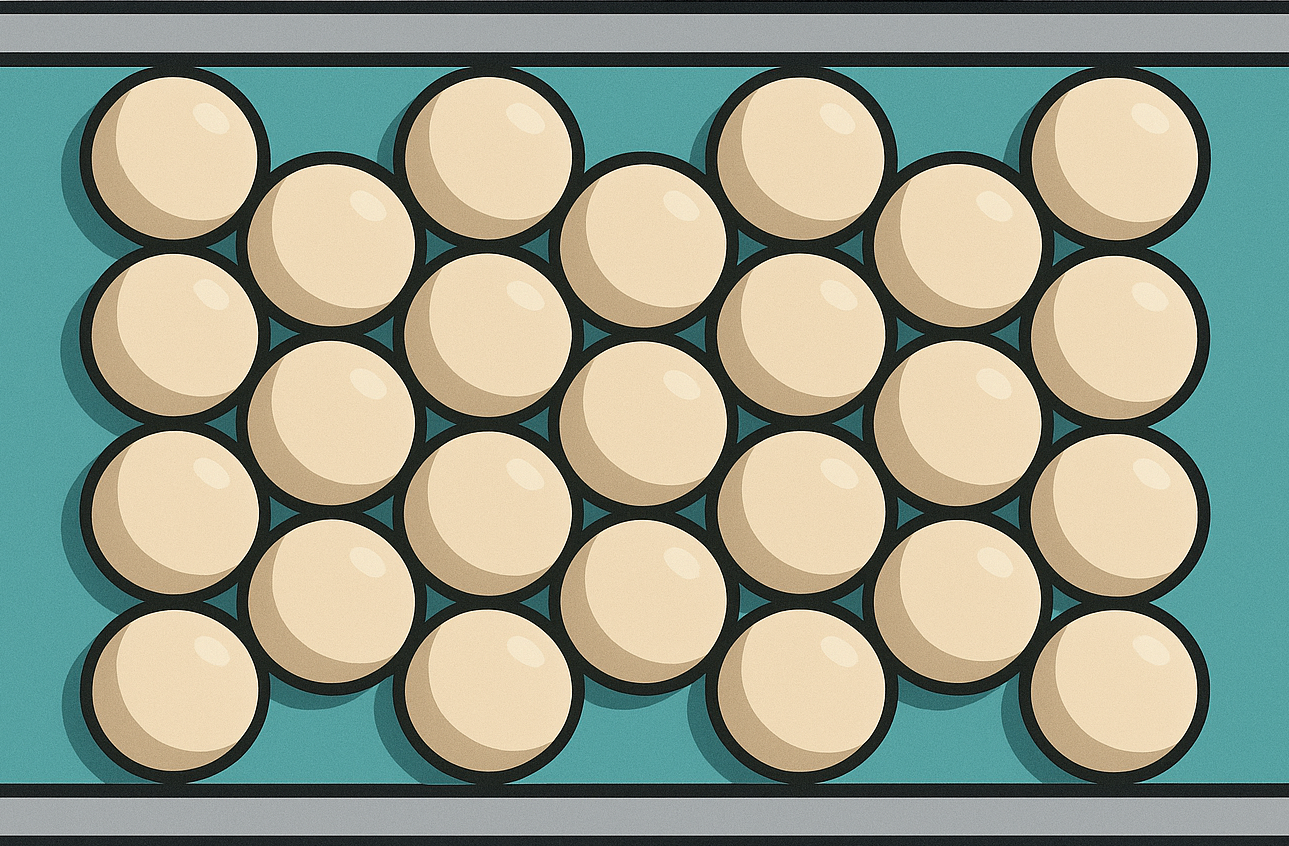Local thermal equilibrium (LTE) model
2025-08-07
In a packed bed, there are two phases: solid and fluid.

Each phase can be modelled as a unique domain with temperature for the solid, and for the fluid. is a function of the spatial location and time. Writing the energy balances for each domain in 1D, we get:
Solid Phase
Fluid Phase
This model is known as the local thermal non-equilibrium (LTNE) model. In real applications, we also consider an energy balance for the wall, but that is not the focus of this essay. The two equations are coupled by the fluid-solid heat transfer coefficient, . For spherical particles, the ratio of the particle external surface area to volume, , is calculated by:
Therefore, the particle size influences the heat transfer rate, with smaller particles increasing the effective surface area and hence, the heat transfer rate between solid and fluid. Under certain conditions, the two equations can be lumped into a single domain with temperature, . The energy balance then changes to:
Lumped Solid Fluid Phase
This model is referred to as the local thermal equilibrium model (LTE). The LTE model is commonly used when simulating pressure and temperature swing adsorption. The LTNE model is commonly used when simulating energy storage in packed beds.